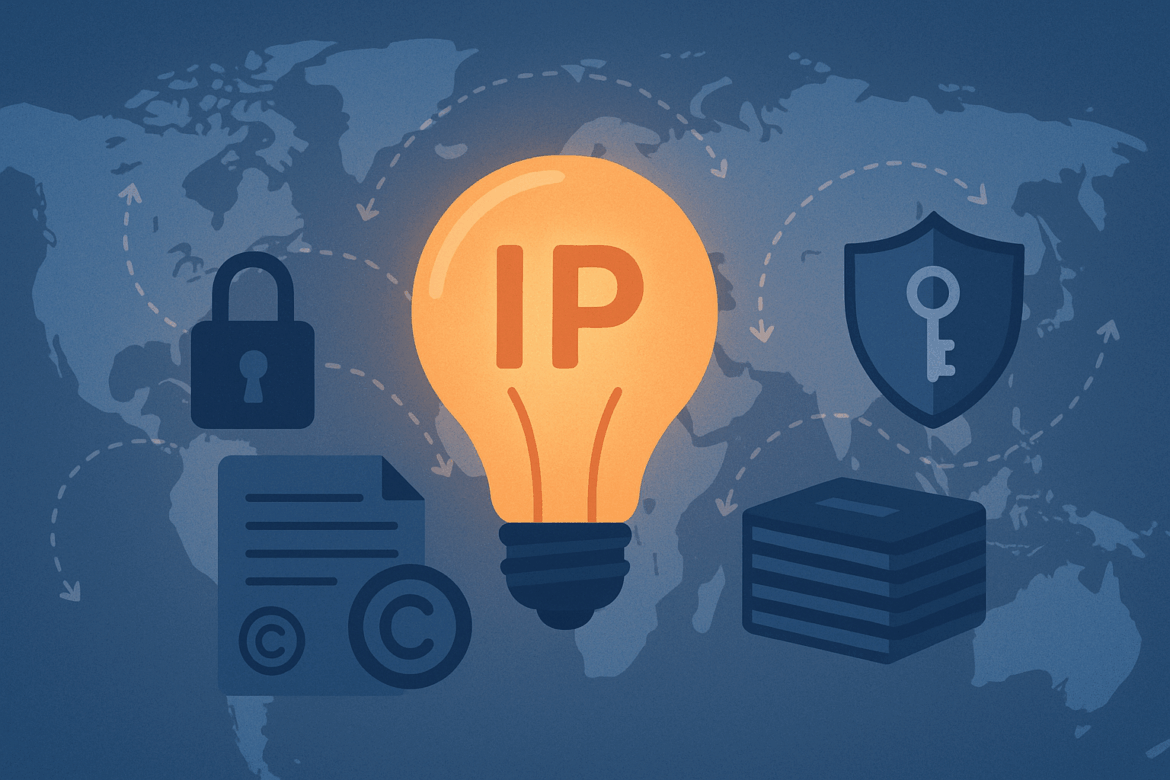Commercial collaboration
Intellectual property is one of the most valuable assets for any business. For a patent for a groundbreaking invention, a trademark for a brand, or copyright for creative works, protecting IP is crucial to maintaining a competitive edge.
However, as businesses expand beyond their borders, ensuring their IP remains secure across multiple jurisdictions becomes more complex. Different countries have different laws, and what may be protected in one country may not be in another. Therefore, understanding how to protect intellectual property internationally is essential for safeguarding innovation and creativity.
This article will explore the best strategies for protecting intellectual property across borders. From registering your IP internationally to understanding the role of a foreign bank account in securing business operations, we will cover essential actions that can help businesses mitigate the risks associated with global IP theft.
Intellectual Property and Its Importance
Intellectual property includes creations of the mind such as inventions, designs, literary and artistic works, symbols, names, and images used in commerce. It plays a critical role in fostering innovation and economic growth by encouraging businesses to invest in new ideas and technologies. IP protection gives creators and businesses exclusive rights to their creations and enables them to control how these works are used and commercialized.
For businesses, protecting it is particularly important in the global economy. As more companies enter foreign markets and collaborate across borders, the likelihood of theft or infringement increases. This makes it essential to have an effective strategy in place to protect your assets across various jurisdictions.
Steps to Protect Your IP Internationally
- Register Your Intellectual Property Abroad
While registering in your home country is the first step, IP protection must extend to other jurisdictions to ensure your rights are enforced globally. Many countries, especially in the USA and EU, have systems in place to allow businesses to file for protection in multiple countries.
For patents, one of the most widely used international systems is the Patent Cooperation Treaty (PCT). It allows businesses to file a single application in multiple countries and provides an efficient way to secure patent rights in many regions without having to file separate applications in each country.
Similarly, the Madrid System for trademarks enables businesses to register their trademarks in multiple countries with one application. This can save significant time and effort compared to registering trademarks in each jurisdiction separately.
- Understand the Role of Local Laws
Each country has its own legal framework for intellectual property protection, and understanding these differences is key to ensuring your IP is adequately protected. For example, the European Union offers protection for certain assets under harmonized laws, such as the European Union Trademark (EUTM) and European Patent, but individual member states also maintain their local laws.
In the USA, IP protection is governed by federal law, but state laws may also come into play in certain situations, especially in trademark disputes. Therefore, businesses need to be familiar with the specific laws in the countries they are entering, as well as any international treaties or agreements that may affect their IP protection.
- Utilize International Trade Secret Protection
Trade secrets can include formulas, processes, or confidential business information that give a company a competitive edge. Unlike patents, trade secrets are not publicly disclosed and can remain protected as long as their confidentiality is maintained.
While trade secrets are generally protected by national laws, there are international agreements in place, such as the Agreement on Trade-Related Aspects of Intellectual Property Rights (TRIPS), that help standardize the protection of trade secrets across borders. For businesses, it is essential to have strong internal measures to safeguard trade secrets, such as using non-disclosure agreements (NDAs) and limiting access to sensitive information.
- Leverage Enforcement Mechanisms
Enforcement mechanisms vary by country, but many regions have established legal processes for handling IP disputes. For example, in the EU, the European Court of Justice plays a significant role in resolving disputes across member states. In the USA, the U.S. Patent and Trademark Office (USPTO) is responsible for overseeing IP protection and disputes.
Many countries also participate in international agreements that make it easier for businesses to enforce their rights across borders. The World Intellectual Property Organization (WIPO) is one such organization that provides a framework for international cooperation in IP enforcement.
Businesses can also protect their IP by monitoring the markets they operate in for any potential infringement. Setting up a system to monitor online marketplaces, trade shows, and patent filings can help detect unauthorized use of your IP early on.
- Secure Financial and Operational Assets
In some cases, a foreign bank account can help shield your assets from legal risks and provide additional security when operating internationally. By setting up operations in foreign markets and securing financial assets in countries with strong IP laws, you can reduce the risks associated with global theft.
- Use Technology and Digital Tools
Tools for monitoring IP usage online, such as software that detects unauthorized use of copyrighted materials or patents, can help companies quickly identify and address potential infringements. Digital rights management (DRM) systems are also useful for protecting digital content and ensuring that copyrighted material is not copied or pirated.
Companies can also leverage blockchain technology for IP protection. Blockchain offers a secure and transparent way to track ownership and provenance, which makes it more difficult for others to claim ownership of a particular piece of intellectual property.
Key International IP Protection Systems
| IP Asset | Protection System | Key Countries Involved | Benefits |
| Patents | Patent Cooperation Treaty (PCT) | USA, EU, Japan, China | Simplifies international patent filing |
| Trademarks | Madrid System | USA, EU, Australia, Canada | Single application for multiple countries |
| Copyrights | Berne Convention | USA, EU, most countries | Protection for creative works globally |
| Trade secrets | TRIPS Agreement | USA, EU, India, Brazil | Standardized protection of trade secrets |
In Conclusion
Proactive steps such as registering IP in multiple countries, understanding local laws, and leveraging technology allow businesses to safeguard their assets. As companies expand their global footprint, they must also consider securing financial and operational resources, including a foreign bank account, to ensure their IP remains safe. Through careful planning, legal expertise, and international cooperation, businesses can successfully navigate the challenges of protecting intellectual property worldwide.





